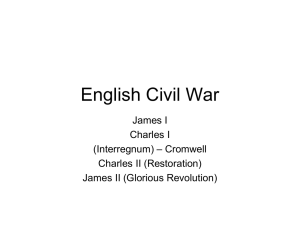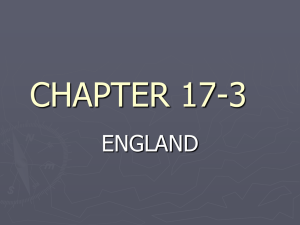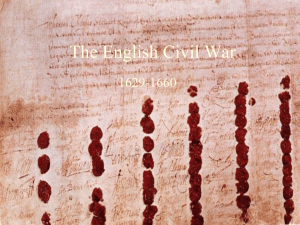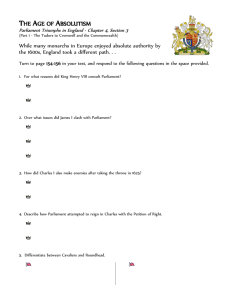England and the Glorious Revolution
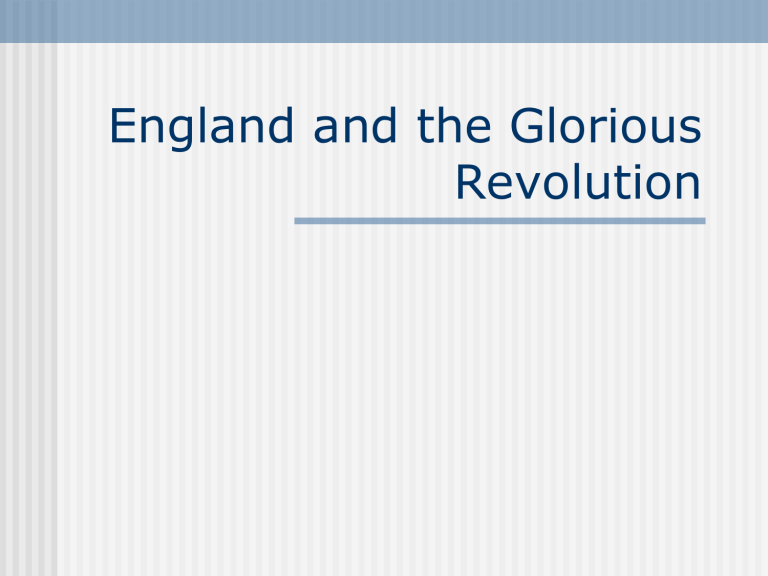
England and the Glorious
Revolution
Monarchs Clash with
Parliament : James I
He came to power after Elizabeth I (who spent too much money and left the government in debt)
He believed kings should have absolute power and argued with parliament over money and how much power parliament should have over the king
Sponsored new translation of the bible, now known as The King James
Bible
Charles I Fights Parliament
· Charles always wanted money from parliament to fight wars with France and Spain. When they didn’t give it to him, he dissolved parliament
·
1628 Petition of Right- parliamanet forced him to sign it, which gave more power to parliament
· Charles ignored the petition but it was an important step because it said the law was higher than the king
·
1629 dissolved parliament
English Civil War (1642 –
1649)
1641 parliament passed law to limit royal power
Protests against Charles and he fled north
Civil war- Charles and the Royalists (Cavaliers) against the Puritans
1646 Oliver Cromwell defeated Charles’s Cavaliers
1649 Charles put on trial for treason and subsequently put to death- this was the first time that a ruler was put on trial and executed
Cromwell’s Rule
1649 Cromwell abolished House of Lords and monarchy and established a commonwealth
Drafted a constitution but it was not used- he tore it up and ran the country as a dictator
1649 Cromwell had to put down a revolt in Ireland
Cromwell favored religious tolerance (including
Jews) except for Catholics
Charles II Reigns
Restored monarchy = Restoration
Charles restored the theater, events, arts
(things the Puritans had banned)
1679 - Established habeas corpus- the law gave prisoners the right to obtain a writ or document ordering the prisoner to be brought before a judge (instead of the king deciding the sentence)
James II and the
Glorious Revolution
1685- Charles died and James II became kinghe was a Catholic king and he moved against the English protestants
Glorious revolution- bloodless overthrow of
James in 1688 when James’s protestant daughter and husband, William of Orange in the Netherlands
Political Changes
Constitutional monarchy- laws limit the power of the ruler
Bill of rights, which the U.S. uses to create its own
Bill of Rights later
Habeas corpus- can’t imprison anyone without a trial
Checks and balances system
Cabinet system- cabinet was the link between the monarchy and parliament
Leader of the cabinet is the leader of the majority party in parliament and also prime minister
After 1688 there was no British monarch and king was unable to rule without consent of parliament

